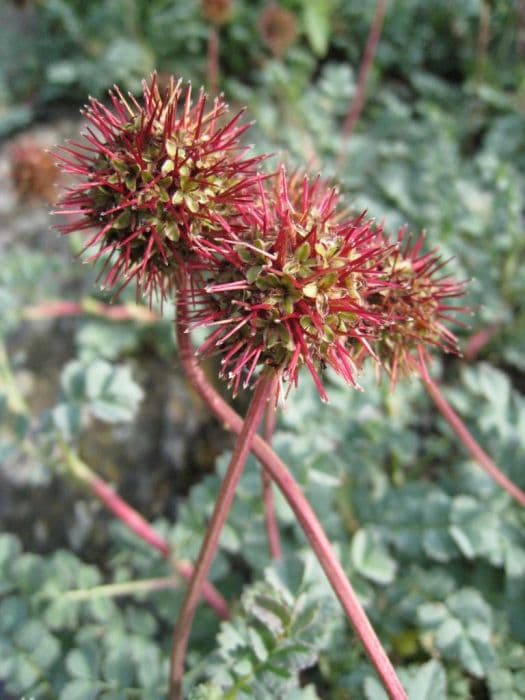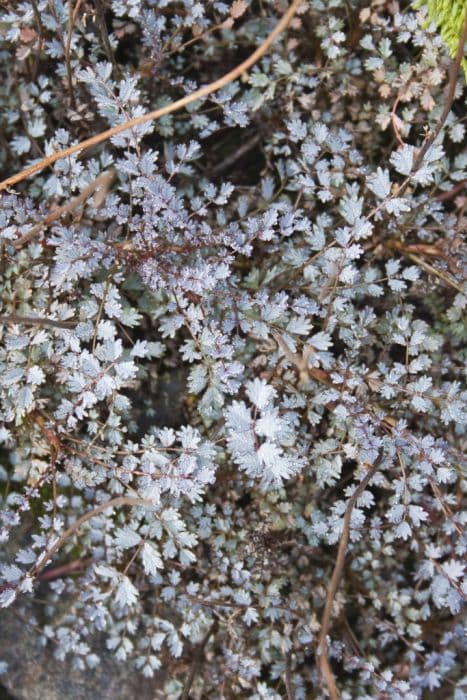Hybrid Tea Rose Rosa John Willan = 'Fryeager' (HT)
![rose [John Willan]](/_next/image?url=https%3A%2F%2Fplants-admin.emdemapps.com%2Fimages%2Fplants%2F%2Fimages%2F604b567ec8819.png&w=3840&q=75)
ABOUT
Rosa John Willan, commonly known as 'Fryeager', is a type of hybrid tea rose known for its distinct and elegant appearance. This rose features large, well-formed blooms that exhibit a classic, high-centered shape synonymous with hybrid tea roses. The flowers tend to be double, boasting a generous number of petals that unfurl majestically as they open. The petals are richly colored, often possessing a deep, alluring hue that can range from bold crimsons to plush pinks, depending on the specific variety. The blooms are carried individually or in small clusters atop long, sturdy stems, which makes them excellent for cutting and display in vases. With a lush radiance, they contribute an air of sophistication to their surroundings. The foliage of 'Fryeager' is typically a glossy, deep green providing a striking backdrop for the vivid flowers. The leaves are generally elongated with serrated edges, complementing the overall elegance of the plant. Both the foliage and the blooms emerge from a robust bush that serves as an anchor for the visual spectacle of the rose's flowering display. As a hybrid tea rose, 'Fryeager' is appreciated for its repeat blooming quality, offering its ornate flowers throughout the growing season under the right conditions. This variety is not only a feast for the eyes but also often carries a delightful fragrance that can fill a garden with a sweet, heady aroma, making it a dual sensory delight. In summary, Rosa John Willan 'Fryeager' is a striking plant characterized by its large, beautifully shaped blooms in sumptuous colors, set against glossy, healthy foliage and exuding an enchanting fragrance, which together create a captivating visual and olfactory experience for any rose enthusiast or passerby.
About this plant
 Names
NamesSynonyms
John Willan Rose, Generous Gardener Rose
Common names
Rosa 'Fryeager'.
 Toxicity
ToxicityTo humans
The Rosa John Willan, commonly known as the Hybrid Tea Rose, is generally not considered poisonous to humans. Ingesting parts of this plant typically does not lead to serious poisoning. However, some people may experience mild stomach upset if they consume the leaves or petals of the rose, and there is a risk of choking or internal blockages if large parts or thorns are swallowed. The most significant risk comes from the thorns, which can cause puncture wounds or skin irritation upon contact.
To pets
The Hybrid Tea Rose is not considered toxic to pets. Ingesting the leaves or petals of roses may lead to mild gastrointestinal upset in some animals, such as vomiting or diarrhea, but serious toxicity is unlikely. However, it's important to be cautious of the thorns as they can cause injury or discomfort to pets if they try to chew on the rose stems.
 Characteristics
CharacteristicsLife cycle
Perennials
Foliage type
Deciduous
Color of leaves
Green
Flower color
Pink
Height
3-4 feet (0.9-1.2 meters)
Spread
2-4 feet (0.6-1.2 meters)
Plant type
Shrub
Hardiness zones
5
Native area
Cultivar
Benefits
 General Benefits
General Benefits- Aesthetic Appeal: Adds beauty to gardens with its vibrant blooms and attractive form.
- Pollinator Attraction: Attracts bees, butterflies, and other beneficial insects that contribute to pollination.
- Fragrance: Emits a delightful scent that enhances the sensory experience in gardens or as a cut flower indoors.
- Mood Enhancement: The presence of flowers like the Hybrid Tea Rose can improve mood and reduce stress for many people.
- Landscape Design: Can be used as a focal point or part of a mixed border for landscape design.
- Cultural Significance: Roses have symbolic meanings and are often used in celebrations and as gifts.
- Variety of Uses: Suitable for use in bouquets, arrangements, and in live plant collections.
- Long Blooming Season: Offers flowers throughout the growing season, providing long-lasting visual interest.
 Medical Properties
Medical Properties- This plant is not used for medical purposes.
 Air-purifying Qualities
Air-purifying QualitiesThis plant is not specifically known for air purifying qualities.
 Other Uses
Other Uses- Natural Fabric Dye: The petals of the rose can be used to make a natural dye for fabrics, imparting a soft pink or lilac color depending on the concentration.
- Culinary Experiments: Rose petals can be crystallized with sugar and used as edible decorations for cakes and desserts.
- Bath Soak: Petals from the roses can be added to bath water for a luxurious and aromatic soak, which is said to be soothing for the skin.
- Floral Water: Distilled rose water made from the petals can be used for its fragrance in homemade cosmetics or as a refreshing spritz in hot weather.
- Gourmet Jelly: The fragrant petals can be infused into a jelly, giving a unique floral twist to breakfasts and desserts.
- Scented Candles: The essential oil or fragrance derived from the roses can be used in candle making, providing a natural rose scent to the environment.
- Personalized Stationery: Rose petals can be pressed and incorporated into handmade paper for a decorative touch to letters and invitations.
- Eco-friendly Confetti: Dried petals can serve as a biodegradable confetti alternative for weddings and celebrations, adding a romantic and sustainable touch.
- Natural Potpourri: Dried rose petals can be mixed with other botanicals to create a natural potpourri, offering a gentle fragrance to a room.
- Gardening Companion Plants: Roses can be planted alongside other garden plants to help attract beneficial insects and possibly aid in the growth and health of neighboring plants.
Interesting Facts
 Feng Shui
Feng ShuiThe hybrid tea rose is not used in Feng Shui practice.
 Zodiac Sign Compitability
Zodiac Sign CompitabilityThe hybrid tea rose is not used in astrology practice.
 Plant Symbolism
Plant Symbolism- Love: As a member of the rose family, the Hybrid Tea rose symbolizes love and romance. This is due to the long-standing association of roses with passion and deep affection in various cultures.
- Beauty: The exquisite form and often perfect blossoms of the Hybrid Tea rose are emblematic of beauty and perfection, making it a common gift to represent admiration for someone's beauty, both internal and external.
- Honor: The rose is traditionally a symbol of honor and reverence, which is why it is commonly used in events that commemorate service or significant achievements.
- Devotion: The endurance of roses, and the recurrent blooms of the Hybrid Tea variety in particular, stand for devotion and enduring affection.
- Secrecy and Confidentiality: Historically, roses were hung from the ceilings of meeting spaces to ensure that matters discussed under the "rose" were to be kept confidential, hence the term sub rosa.
 Water
WaterFor the Hybrid Tea Rose, it is essential to maintain consistent moisture in the soil, but avoid overwatering. Generally, watering should take place once a week with about 1 to 2 gallons per plant, depending on the weather conditions. During hot, dry periods, it may be necessary to water twice a week. Use a soaker hose or drip irrigation to deliver water directly to the base of the plant, deeply saturating the root zone. Avoid overhead watering to keep the foliage dry and prevent fungal diseases.
 Light
LightHybrid Tea Roses require full sun to flourish, meaning they need at least six hours of direct sunlight each day. The best spot for these roses is in an area that receives morning sunlight, which helps dry dew from the leaves and reduces the risk of disease. Avoid planting in heavy shade, as this can lead to poor blooms and weak growth.
 Temperature
TemperatureHybrid Tea Roses thrive in a wide range of temperatures, but they prefer a temperate climate. They can typically tolerate minimum temperatures in the range of 20 to 30 degrees Fahrenheit during their dormant period in winter. Ideally, daytime temperatures should be between 70 and 85 degrees Fahrenheit for optimal growth. Roses can suffer from heat stress if temperatures exceed 90 degrees Fahrenheit for extended periods.
 Pruning
PruningPruning is crucial for maintaining the health and shape of your Hybrid Tea Rose. It helps to encourage new growth, improve air circulation, and prevent diseases. Prune in early spring just as buds begin to swell, removing dead or diseased wood and any thin or crossing branches. Also, cut back about one-third to half of the previous year's growth to promote vigorous blooms. Pruning should be done annually.
 Cleaning
CleaningAs needed
 Soil
SoilHybrid Tea Roses like Rosa 'John Willan' ('Fryeager') prefer well-draining soil enriched with organic matter, a loamy composition, and a pH range from 6.0 to 6.5. A basic recipe for soil mix could include 1/3 topsoil, 1/3 compost or well-rotted manure, and 1/3 grit or perlite for drainage.
 Repotting
RepottingHybrid Tea Roses, such as Rosa 'John Willan' ('Fryeager'), are generally not repotted as they are outdoor plants. Instead, they might be transplanted occasionally if they outgrow their space or need rejuvenation.
 Humidity & Misting
Humidity & MistingRosa 'John Willan' ('Fryeager') or Hybrid Tea Roses typically thrive in moderate humidity levels, as excessive humidity can lead to fungal diseases. Average outdoor humidity conditions are usually sufficient for these roses.
 Suitable locations
Suitable locationsIndoor
Rosa 'John Willan' needs bright light, cool temps, and air circulation indoors.
Outdoor
Plant in full sun, enrich soil, water deeply, provide space and support.
Hardiness zone
5-9 USDA
 Life cycle
Life cycleThe life cycle of the 'Fryeager' hybrid tea rose, commonly known as the Rosa 'John Willan', begins with seed germination, although cultivated roses are often propagated by cuttings or grafting to ensure genetic consistency. Once germinated or after rooting, the young plant enters a vegetative stage, producing stems, leaves, and roots as it establishes itself. As the plant matures, it enters the flowering stage, typically in late spring to early summer, where it develops its signature fragrant blossoms that are often prized for their beauty. After pollination, which can be facilitated by insects or wind, the flowers develop into fruit known as hips, which contain seeds for future generations. In fall to winter, the rose plant enters a period of dormancy, conserving energy and preparing for the next cycle of growth with the return of favorable growing conditions. Proper care throughout these stages, including pruning, watering, and disease management, is essential for the health and longevity of the plant.
 Propogation
PropogationPropogation time
Spring to Summer
The Rosa John Willan, commonly known as a type of Hybrid Tea Rose, is typically propagated through the method of softwood cuttings. The best time for this practice is late spring to early summer, when the plant's new growth is mature enough yet still tender. To propagate, a gardener would cut a piece of the stem about 6 to 8 inches long with several leaves, ensuring at least two or three sets of leaf nodes. The bottom set of leaves is removed, and the cut end can be treated with a rooting hormone to encourage root development. This cutting is then placed in a pot with moist, well-draining soil and covered with a plastic bag or placed in a propagator to maintain humidity. The soil should be kept evenly moist but not waterlogged. In a few weeks, if conditions are right, roots will form, and the new rose plant will be ready to gradually acclimatize to outdoor conditions before being transplanted into the garden.









